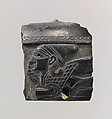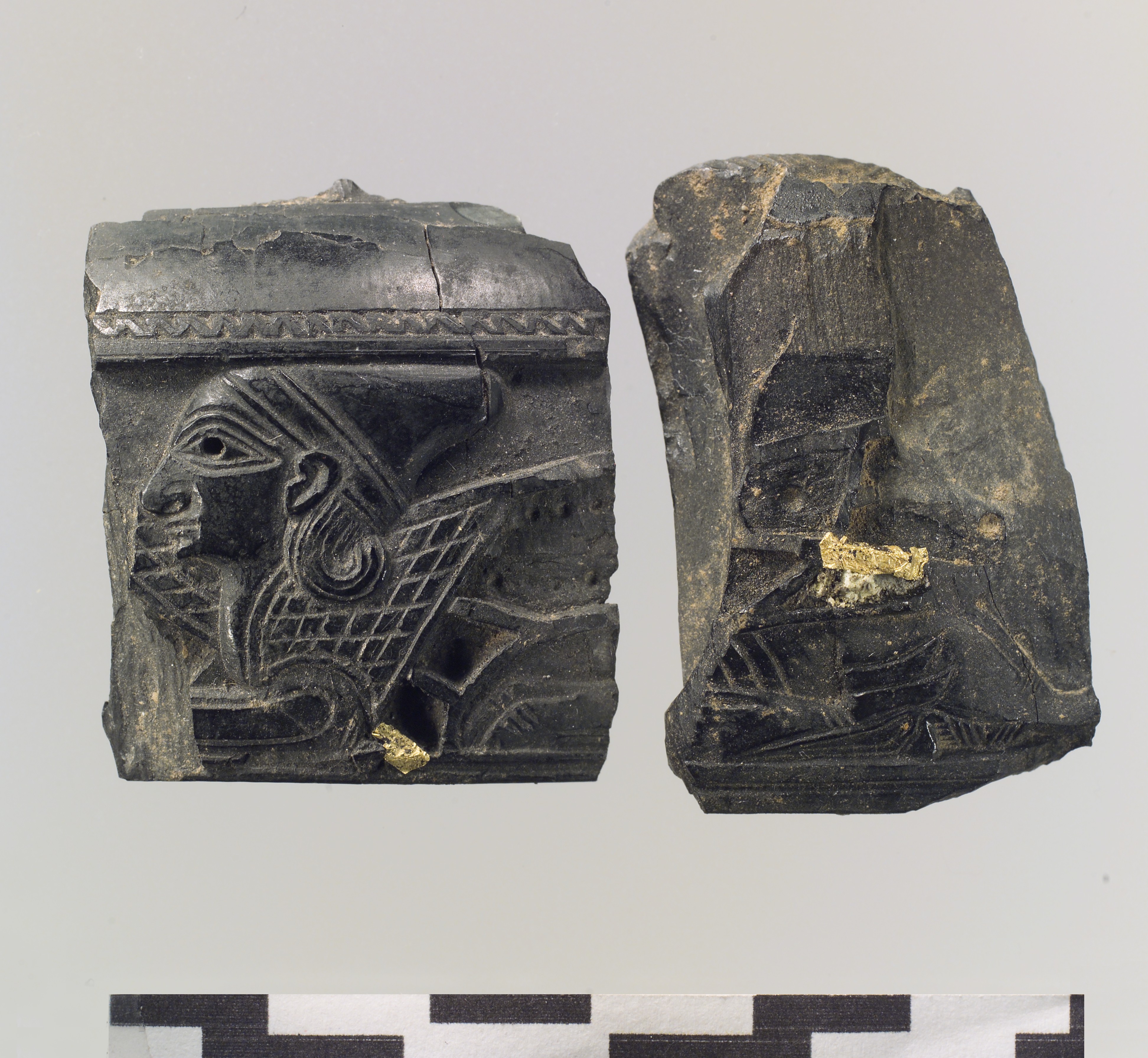Cosmetic box fragment carved in relief with the head of a sphinx
Not on view
Excavations at Hasanlu in Iran yielded a large number of carved ivory fragments which probably decorated wooden furniture or were used as small precious objects such as boxes. The citadel at Hasanlu was attacked and destroyed around 800 B.C., most likely by military forces of the powerful state of Urartu, centered in present-day Armenia, eastern Turkey, and northwestern Iran. In the fire that destroyed the citadel, many objects were crushed and shattered. The blackened appearance of most of the Hasanlu ivories is due to their exposure to high temperatures at the time of the citadel’s destruction.
This fragment of a pyxis, or box, depicts a seated sphinx. The beardless, perhaps female sphinx wears a soft peaked cap with a band at the forehead, tucked behind the ear. A curled lock of hair covers the back of the neck. The pupil of the eye is drilled to receive an inlay, now missing, as are the sections that make up the wing feathers. The bottom edge of the wing still preserves a small piece of its original gold foil. The base of the pyxis was originally attached to the sides by means of dowels. Although the base is no longer preserved, one of the dowels still remains, inserted into a hole drilled into this fragment.
Due to rights restrictions, this image cannot be enlarged, viewed at full screen, or downloaded.
This artwork is meant to be viewed from right to left. Scroll left to view more.



